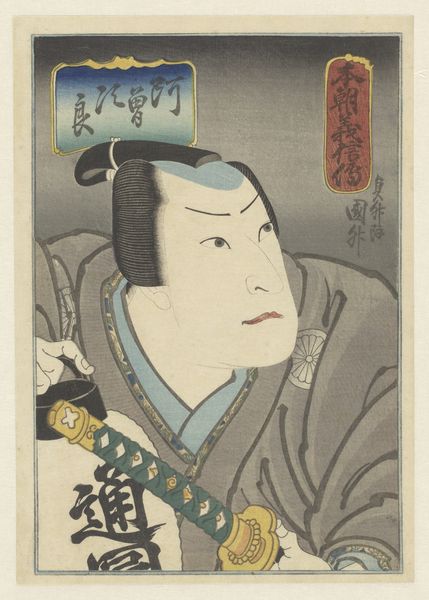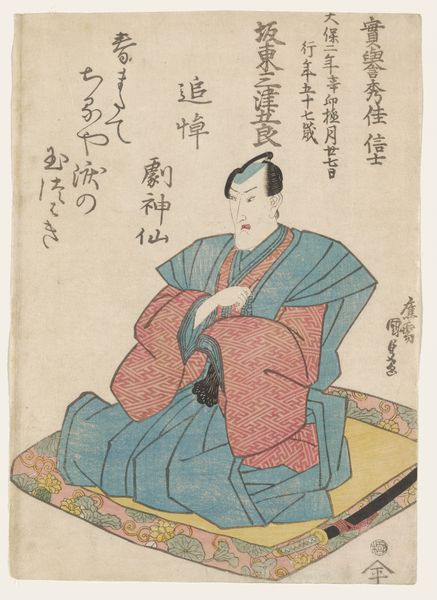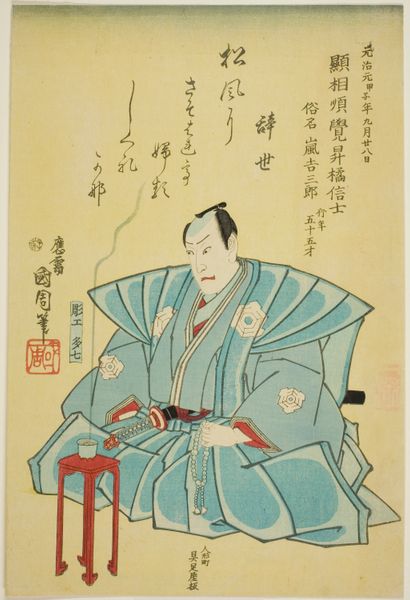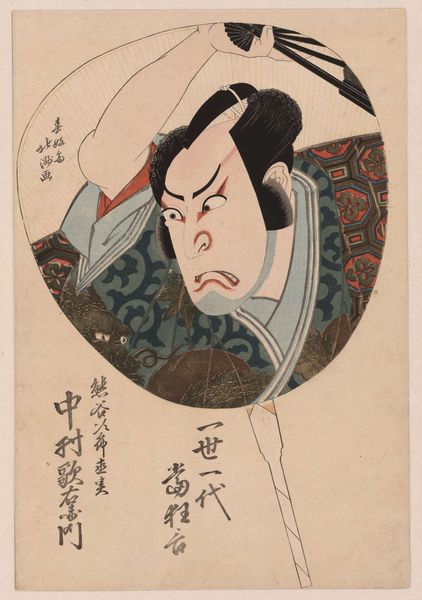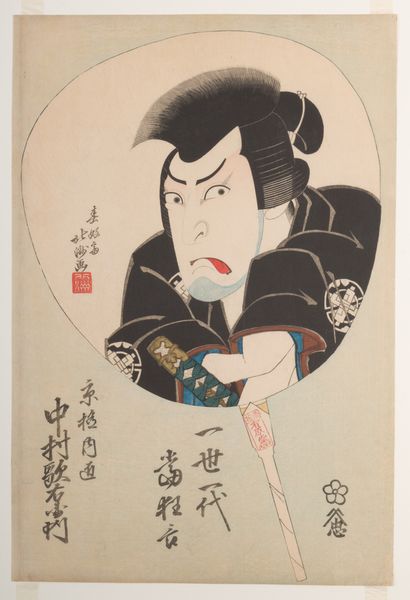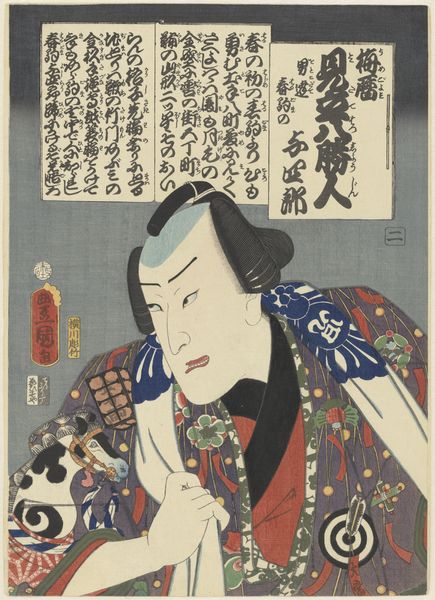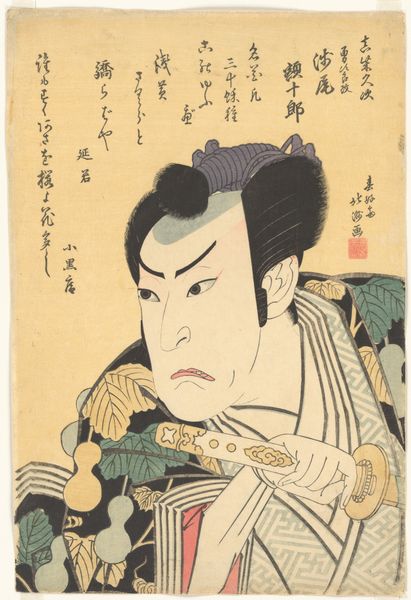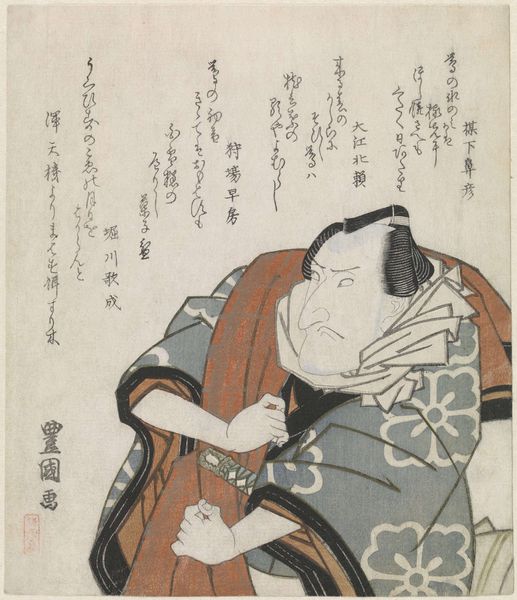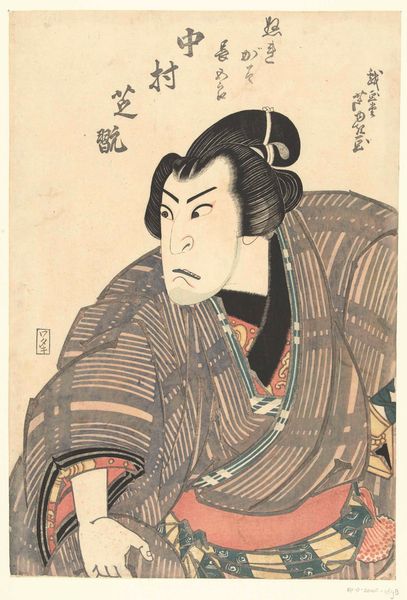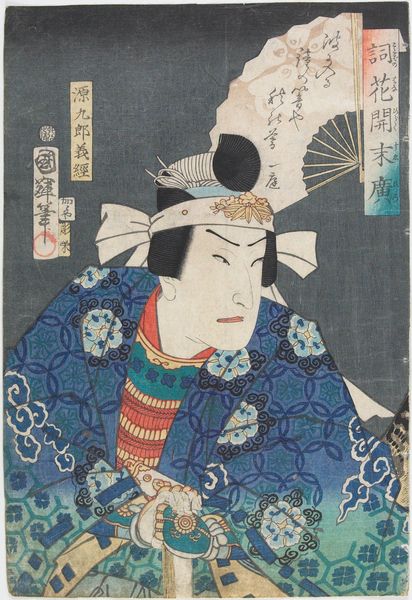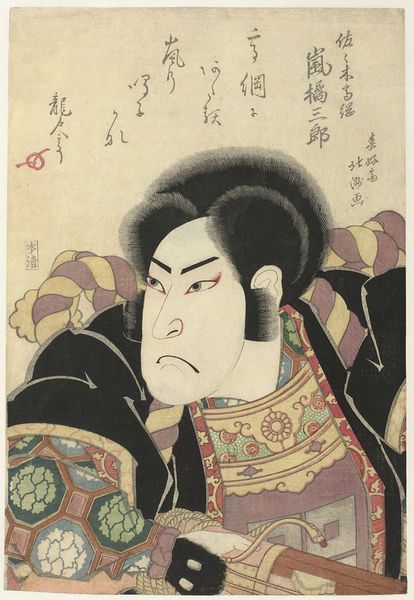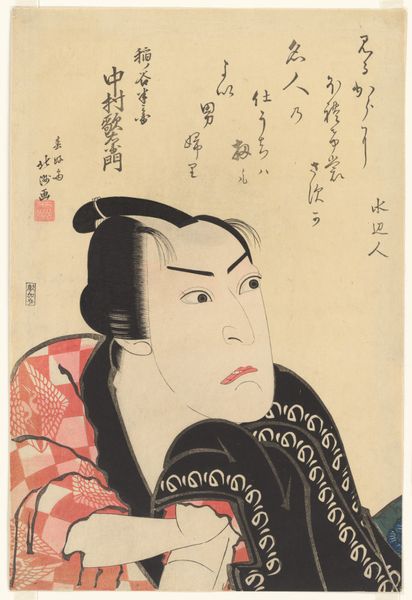
Memorial Portrait of the Actor Bando Shuka I in the Role of Shirai Gonpachi 1855
print, woodblock-print
portrait
water colours
caricature
asian-art
caricature
ukiyo-e
woodblock-print
Copyright: Public Domain
Curator: Looking at "Memorial Portrait of the Actor Bando Shuka I in the Role of Shirai Gonpachi," created in 1855, the subdued palette creates such a melancholic atmosphere, doesn't it? Editor: Absolutely. The pale blues and greys certainly contribute to that sense of sorrow, almost like a fading memory. And the butterflies floating above – they really heighten that feeling of something ephemeral. Curator: It's fascinating to consider that this is a woodblock print, a medium which lends itself to mass production, yet here it is commemorating a specific individual, Bando Shuka I, in his role as Shirai Gonpachi. The labor and technique involved in creating such detail repeatedly would have been quite extensive. Editor: Indeed. Gonpachi himself is such a potent figure in Japanese folklore. He’s remembered as a tragic lover and thief, almost a Robin Hood figure. The artist captures that internal conflict, the hint of sadness mixed with a steely resolve in his gaze. The fan he holds likely has layers of symbolic meaning too – a shield? A subtle suggestion of the wind, hinting at change and impermanence? Curator: I’m more drawn to the tangible aspects - the quality of the paper, the way the ink sits on the surface. I wonder about the process of creating those subtle gradations of color; the labor division for the production, and what type of workshop might have been responsible. These details emphasize the physical creation. Editor: And to move back to the symbology—those butterflies. They might also reference the actor’s transformation into this iconic role, emerging from a kind of chrysalis. The Ukiyo-e tradition is full of layered meaning like this. Curator: From a materialist lens, it makes me contemplate the broader distribution and consumption of these prints at the time and to speculate on its impact and accessibility in the culture of 1855. It acts as an artifact to this historic production system. Editor: It all adds up to a deeply moving piece, regardless of how you interpret it. The combination of technique and cultural weight is profound. Curator: Yes, understanding the meticulous methods through which it was fabricated reveals a profound cultural labor. Editor: Definitely, it truly gives you insight into cultural and emotional expression during that time.
Comments
No comments
Be the first to comment and join the conversation on the ultimate creative platform.
